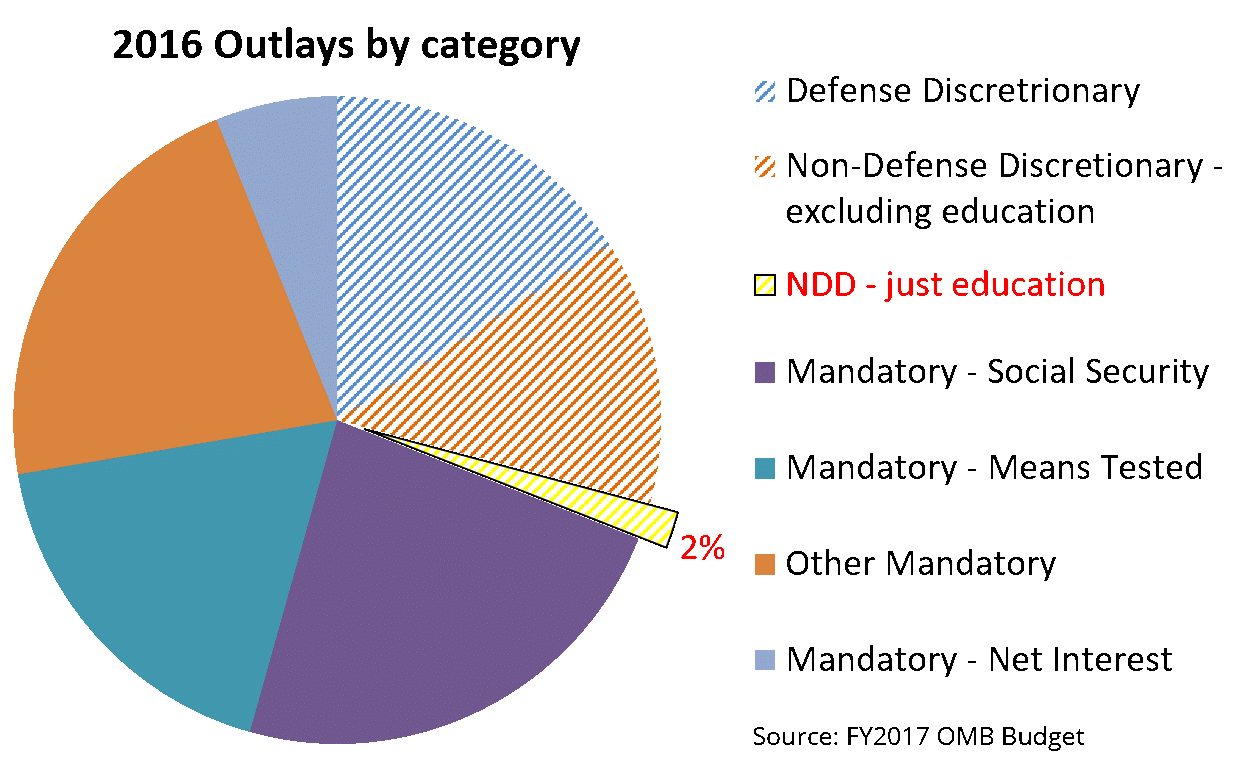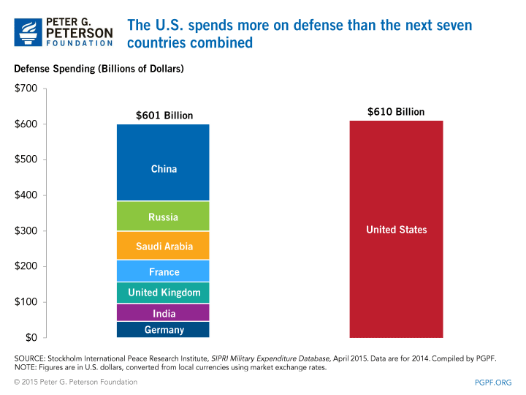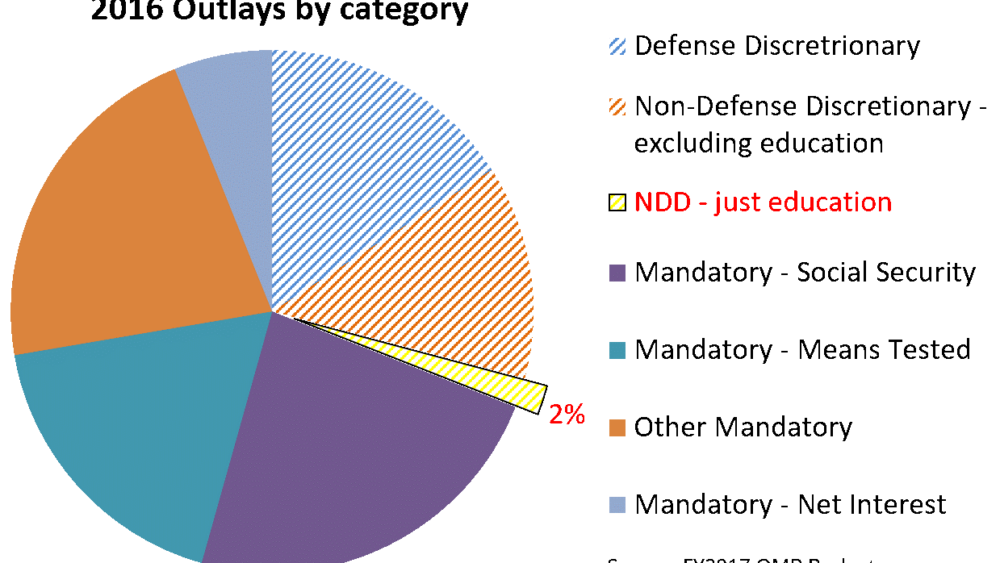So you give a dollar (well, probably more than one) to the federal government in taxes. How does it get spent?
It might surprise you to know that only about 2 cents of that dollar goes to education.
 |
How does the government arrive at that figure? Many of the expenditures in the federal budget are mandatory, like Social Security, Medicare, Medicaid, and servicing the national debt. The government does not need to make a budget for these items each year, but will spend as much as it needs to meet its obligations under current law.
The remaining expenditures—including education funding—are known as discretionary spending, which means Congress, through its annual budget and appropriations process, must determine a top level of spending for the year and then let agencies and departments know how much they each will be able to spend.
Combined, these two spending streams—mandatory and discretionary—make up all government spending. And when you give the government a dollar for this spending, it spends just 2 of your cents on education. Many Americans think this is not enough. If you’re one of them, make your voice heard today.
In the 5 Cents Makes Sense Campaign, a group called the Coalition for Education Funding—of which the Afterschool Alliance is a member—is recommending that these 2 cents currently being spent on education increase to a commitment of 5 cents of every federally collected dollar.
Education is the foundation of many other government initiatives. It helps drive the incomes of those contributing to the future tax base. It improves the health of those who pursue it further. It creates the future workforce in other areas of government investment such as health care, the military, engineering, infrastructure and the arts. Increasing the federal investment would enable federal education programs like assistance to children with special needs, loan programs to help with costs of higher education, and support for low income schools to more closely meet the demand across the nation.
 |
| Click to enlarge. |
Even if a 5 percent investment were to be secured, how the pie is divided is only half the solution. The other solution involves the size of the actual pie. Half of a cupcake is a lot less than half of a sheet cake—so how much stuff (money or tasty dessert) is available matters immensely.
Since mandatory spending is considered fixed, education spending, at least in the short term, really depends on how the federal government allocates its discretionary spending dollars. In a process known as “parity,” the Budget Control Act of 2011 (also known as the “sequester”), required equal budget cuts between discretionary defense and non-defense spending. Any sequester relief packages have followed the same pattern, increasing both by equal amounts.
In late February, the president reported he would like to see a $54 billion increase in defense discretionary spending and a cut all other spending (known as non-defense discretionary, or NDD, spending), which includes education spending, by about an equal amount. This would eliminate parity, and while it is quite uncertain Congress would be willing to do so, if agreed to it could mean cuts as large as 15 percent in programs that constituents all across the country care about.
 |
| Click to enlarge. |
NDD United, an advocacy organization in which the Afterschool Alliance also takes part, works to ensure parity among defense and non-defense budgets, such that any cut or increase in one is matched with an equivalent cut or increase in the other. The range of programs and departments that would be affected by a non-defense budget cut is broad. To help people understand some of the effects, NDD United put together an infographic of how a selection of NDD programs relate to daily life. More than 2,000 federal, state and local organizations, including the Afterschool Alliance, signed an NDD United letter earlier this month calling on Congress and the president to “work together to protect NDD programs from further cuts and end sequestration.” The letter continues, “Such sequestration relief must be equally balanced between non-defense and defense programs.”
Although we’re only a few months in, 2017 has already been a “huge” year for community activism. The federal government holds the responsibility to tax and spend as a representation of the interests of the people across the nation: representatives need to hear what your priorities are loud and clear in order to know how to spend your dollar (or, well, dollars). At the Afterschool Alliance, we believe 5 Cents Makes Sense—if you want the government to spend more of your dollar on afterschool programs, tell them today.

Comments are closed.